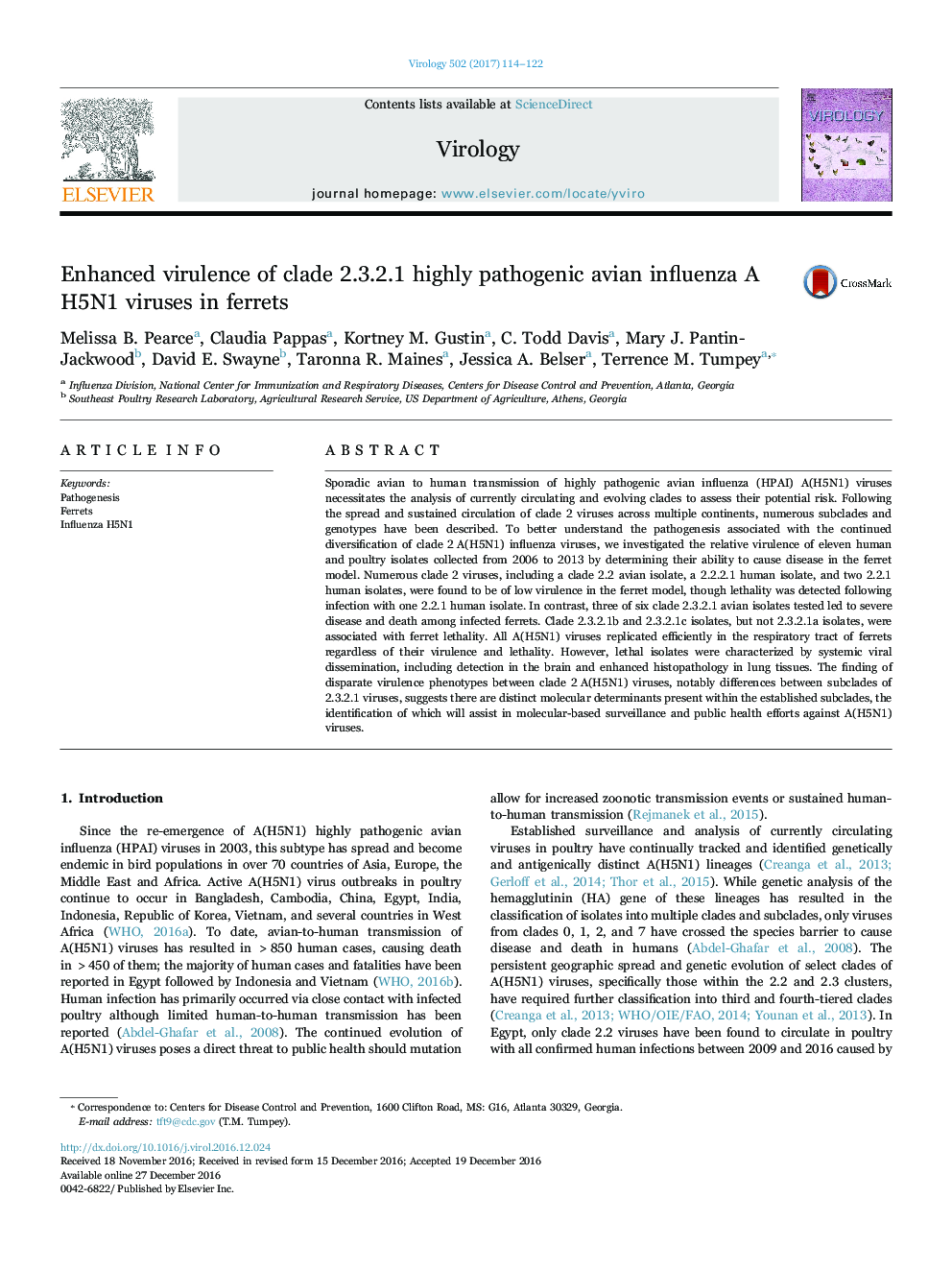| Article ID | Journal | Published Year | Pages | File Type |
|---|---|---|---|---|
| 5675164 | Virology | 2017 | 9 Pages |
â¢The relative virulence of 11 H5N1 viruses isolated between 2006 and 2013 were determined.â¢Clade 2.3.2.1b, but not 2.3.2.1a viruses were associated with ferret lethality.â¢Clade 2.3.2.1b viruses possessed the most severe histopathological changes in lung tissues.â¢Molecular correlates of H5N1 virus pathogenicity were assessed.
Sporadic avian to human transmission of highly pathogenic avian influenza (HPAI) A(H5N1) viruses necessitates the analysis of currently circulating and evolving clades to assess their potential risk. Following the spread and sustained circulation of clade 2 viruses across multiple continents, numerous subclades and genotypes have been described. To better understand the pathogenesis associated with the continued diversification of clade 2Â A(H5N1) influenza viruses, we investigated the relative virulence of eleven human and poultry isolates collected from 2006 to 2013 by determining their ability to cause disease in the ferret model. Numerous clade 2 viruses, including a clade 2.2 avian isolate, a 2.2.2.1 human isolate, and two 2.2.1 human isolates, were found to be of low virulence in the ferret model, though lethality was detected following infection with one 2.2.1 human isolate. In contrast, three of six clade 2.3.2.1 avian isolates tested led to severe disease and death among infected ferrets. Clade 2.3.2.1b and 2.3.2.1c isolates, but not 2.3.2.1a isolates, were associated with ferret lethality. All A(H5N1) viruses replicated efficiently in the respiratory tract of ferrets regardless of their virulence and lethality. However, lethal isolates were characterized by systemic viral dissemination, including detection in the brain and enhanced histopathology in lung tissues. The finding of disparate virulence phenotypes between clade 2Â A(H5N1) viruses, notably differences between subclades of 2.3.2.1 viruses, suggests there are distinct molecular determinants present within the established subclades, the identification of which will assist in molecular-based surveillance and public health efforts against A(H5N1) viruses.
